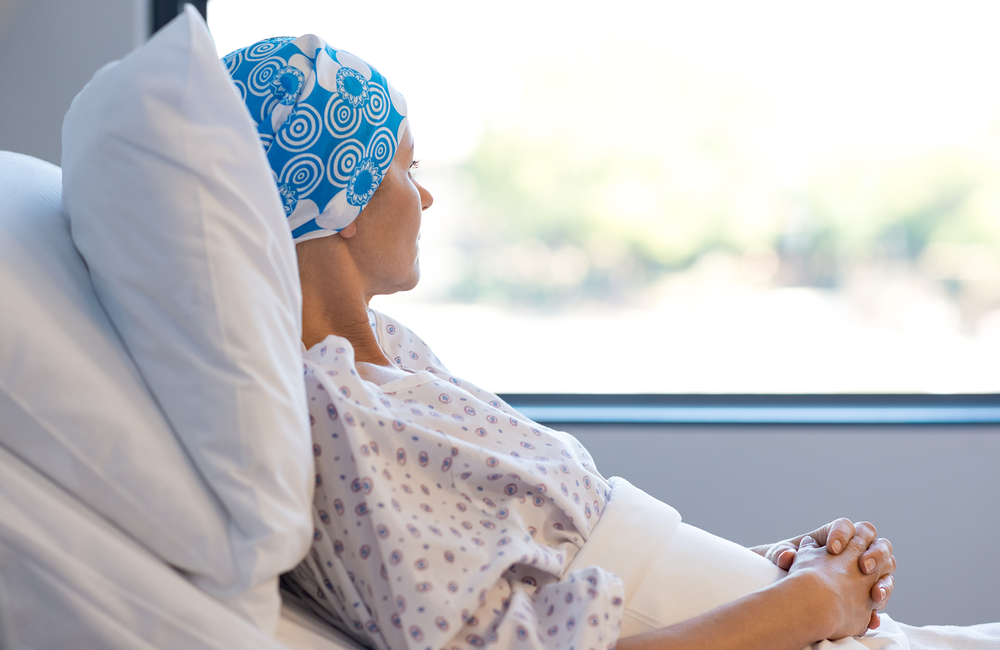
“I think cancer is deadly…it puts a stop to everything… HIV, I’d take my tablets for a little while and I’d bounce back”.
This quote is from a man in his thirties, living with HIV and also diagnosed with cancer. He participated in a UK study that explored experiences of cancer care, from the perspectives of both people living with HIV and healthcare professionals. The study concludes that both HIV and cancer have a powerful and a combined impact, and that for cancer, this impact is visible, while for HIV, it is generally hidden.
Persistent HIV-related stigma
In our era of potent antiretroviral therapy (ART), AIDS-defining cancers (Kaposi’s sarcoma, Non-Hodgkin lymphoma and cervical cancer) occur less frequently, although their incidence among people living with HIV is still greater than in the general population.
Meanwhile, as HIV-positive people live longer, they are increasingly exposed to more common types of cancers associated with lifestyle and ageing, such as lung, prostate or colorectal cancers. Dr Emma Hainsworth and colleagues, authors of the study presented here, note: “With nearly 100,000 people living with HIV and receiving care in the UK, and over 7000 still undiagnosed, it is inevitable that an increasing number of people living with HIV will engage with cancer services”.
Although life-threatening and quite often disruptive for people’s activities, due to debilitating symptoms and treatment toxicities, cancer is socially acceptable. This does not mean that for a person with cancer, it is always easy to talk about the disease. There may be a social pressure to talk about cancer in positive, courageous terms. Nonetheless, the chances are that a person discussing cancer will be perceived as deserving sympathy.
For HIV, things are very different. Today, treatments are easy to take, people with HIV live as long as the general population and, with an undetectable viral load, will not pass HIV to their partners. But regrettably, despite this “normalisation” of the virus, there is persistent HIV-related stigma within society, often intersecting with other stigmas such as those related to being gay or a migrant.
Exploring narratives
Exploring the experiences of people diagnosed with both diseases through cancer care is therefore important.
Between 2015 and 2017, Hainsworth conducted in-depth interviews with 17 individuals living with HIV who received cancer treatment. All data were collected from three hospitals in London, selected because they serve a diverse population of people living with HIV.
Ethnographic observations – a method where researchers observe and/or interact with a study’s participants in their real-life environment – were also performed in the healthcare settings where patients received their treatment. These settings included specialist HIV services, where cancer treatment providers had been trained in HIV care, and also oncology services, where staff were trained only in cancer care.
Also, seven informal interviews were held with healthcare professionals providing this care.
Patients with a wide range of characteristics were selected for interview. In terms of cancer type, five had Non-Hodgkin’s lymphoma, with one or two interviewees having each of the following cancers: Hodgkin lymphoma, rare lymphomas, lung, prostate, colorectal, head and neck, squamous cell, melanoma and myeloma. Three were diagnosed with HIV and cancer at the same time, while 14 were already aware of their HIV when they were diagnosed with cancer.
There were four women and 13 men. Four patients were originally from Africa; one from the Middle East; two from eastern Europe; two from South America; and eight from the UK.
Participants were first interviewed at the start of their cancer treatment. Seven participants were interviewed again, usually at the end of the treatment or beyond, to capture any change over time. However, six other participants could not be re-interviewed because they had died, showing how unwell they were when they joined the study.
Both the interview and the observation data were analysed thematically, that is, in a way that would allow broad themes and subthemes to emerge from the various narratives.
The many struggles
The most obvious difference which had implications for the way in which people framed their experiences was the timing of their HIV diagnosis. In people diagnosed with HIV in the eighties or early nineties, the impact of HIV diagnosis is not the same, in terms of expectations for the future, as for people diagnosed later, in an era when HIV has become manageable with ART.
The experience was different again for those participants who had been told, at the same moment, that they had HIV and cancer. This often happened when they were very unwell and hospitalised.
"It was socially acceptable to talk about cancer, which opened the door to support and sympathetic responses from other people."
Most participants with this dual diagnosis perceived that both cancer and HIV had a powerful impact on their lives. But the two conditions were experienced differently. With cancer, there was uncertainty regarding outcomes, symptoms and treatment side effects. Physical changes were a constant concern. Yet it was socially acceptable to talk about cancer, which opened the door to support and sympathetic responses from other people.
At the same time, although HIV was well managed with an easy treatment, it was kept hidden for fear of rejection or discrimination due to stigma.
Most patients were socially isolated. They reported that any support they received depended on their HIV status remaining hidden. One woman said:
“So, there I was, able to… because a lot of these friends don’t know about the other one, so I sort of, you know, 10 years on I was getting some support that I never had got… You know I’ve been pulling on that, not in a poor me type of way, but just in allowing people to rally round.”
Patients were not confident that cancer teams were knowledgeable enough of HIV to manage their virus in the appropriate way. Staff did not seem to be aware of 'Undetectable = Untransmittable' (U=U). Some patients even had to remind them of what to do, such as measuring their CD4 count.
“I’m going round making sure that, having to make sure, you know what I mean… you know I’m not knocking any of the staff, they’re really good, they do a wonderful job here. I just, I’m not in the medical field to specialise in what I should be taking or whatever but you know I’ve got to check up and make sure I’m taking the right medication.”
Some healthcare professionals, especially nurses, acknowledged their insufficient training on HIV.
“I definitely don’t know if the drugs are doing what they’re meant to be doing… with the antiviral drugs I honestly haven’t got a clue. And I feel a loss of control over that in some ways.”
Patients experienced stigma in the cancer clinics. It was associated with HIV, but also with being gay or a migrant. The authors give the example of an African woman who was offered a choice, following treatment-related hair loss, of straight-haired wigs.
Not being given information on cancer treatment outcomes that were specific to people living with HIV could be perceived as stigmatising. Some patients even felt that they were being experimented upon, which reinforced their perception of being cared for inappropriately, even as a “guinea pig”.
Their HIV status was seen as a barrier to access to cancer treatments by patients, as it made them ineligible for some. Similarly, HIV is often an exclusion criterion from clinical research where innovative treatments are tested, which both patients and medical teams felt was unfair. The paper’s authors underline the contradiction: if HIV is now a “normal” illness, why exclude people who have it from a trial?
Interviews showed that many patients were struggling to manage information and keep their HIV status secret to avoid rejection – all of which was emotionally gruelling, as they were going through an extremely challenging phase of their life.
Some healthcare professionals did not always understand the need for this secrecy and seem to have been more concerned about how it impacted on their own work, such as explaining medications in the presence of visitors or other cancer patients.
A nurse in a haematology ward said:
“It is made a point of in handover, they don’t want anyone other than you to know one or whoever, to know. And then often you wouldn’t know who the person they would want to know is… so I found myself not discussing anything really.”
The authors conclude that their study “found that having two serious illnesses, one which is lifelong and stigmatising, and one which is potentially life-threatening but socially acceptable, added to the burden of illness experienced by patients”. Undoubtedly, the results shed a light on what improvements are needed to provide appropriate patient-centred cancer care for people living with HIV.
Hainsworth EG et al. HIV positive and treated for cancer: The convergence of pressures “invisible” in HIV and “visible” in cancer. European Journal of Cancer Care, online ahead of print, e13222, 2019 (open access).

